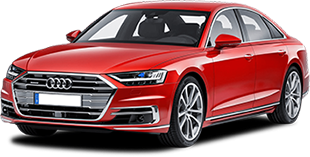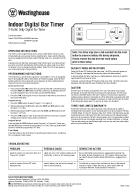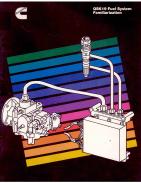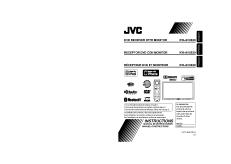ATVs & Accessories - Yamaha - 2012 Yamaha Grizzly 550 4x4 EPS
Get your hands on the complete Aro factory workshop software
Download nowGet your hands on the Complete Aro Factory Workshop Software
Download nowGet notified when we add a new AroSpartana Manual
We cover 60 Aro vehicles, were you looking for one of these?

Skoda - Auto - skoda-karoq-2017-brukerhandbok-110449

Skoda - Auto - skoda-karoq-2017-110460

Skoda - Auto - skoda-karoq-2017-handleiding-110448

Skoda - Auto - skoda-karoq-2017-instruktionsbog-110435

Skoda - Auto - skoda-karoq-2017-110453

Skoda - Auto - skoda-karoq-2017-omistajan-kasikirja-110439

Skoda - Auto - skoda-karoq-2017-110444

Skoda - Auto - skoda-karoq-2017-kullan-m-k-lavuzu-110458

Skoda - Auto - skoda-karoq-2017-110457

Skoda - Auto - skoda-karoq-2017-navod-k-obsluze-110433

Skoda - Auto - skoda-karoq-2017-manualul-de-utilizare-110452

Skoda - Auto - skoda-karoq-2017-ipasnieka-rokasgramata-110447

Skoda - Auto - skoda-karoq-2017-agarmanual-110454

Skoda - Auto - skoda-karoq-2017-uzivatelska-prirucka-110455

Pool Equipment - Haywood-Pool - Super Pump~All Super Pump Models

Skoda - Auto - skoda-karoq-2017-110441

ARO - 10 - Owners Manual - 1980 - 2006

Skoda - Auto - skoda-karoq-2017-manuel-du-proprietaire-110440

Skoda - Auto - skoda-karoq-2017-prirocnik-za-lastnika-110456

Skoda - Auto - skoda-karoq-2017-savininko-vadovas-110446

Skoda - Auto - skoda-karoq-2017-manual-del-propietario-110438

Cars & Automotive Accessories - Kenwood - C929

Barossa - Motorcycle - Barossa__Barossa_PYTHON_100cc_parts_5d8a7f921c3648a62136367

Skoda - Auto - skoda-karoq-2017-manual-do-proprietario-110451

VCRs & Accessories - Hitachi Electronics - VTM171A

Cameras & Accessories - Nikon - Nikon COOLPIX S203

Power Tools & Accessories - STIHL - STIHL Trimmer FS 40, FS 50

Video Cameras, Camcorders, & Accessories - Canon - ZR900 Camcorder

Speaker Systems - JBL - Xtreme

Toys & Accessories - Lego - DUPLO Town - AROUND THE WORLD - 10805

Skoda - Auto - skoda-karoq-2017-instrukcja-obslugi-110450

Printers & Accessories - Epson - Stylus Pro 9000

Speakers & Audio Accessories - Dual - Dual - SX652 ~ SX692

ARO - 10 - Parts Catalogue - 1990 - 2006.PDF

Furniture & Storage - Blue Rhino - GAD1375SP

Skoda - Auto - skoda-karoq-2017-omaniku-kasiraamat-110436

Printers & Accessories - Xerox - WorkCentre Pro C2128~C2636~C3545

Sewing Machine - Singer - 14T968DC %7C PROFESSIONAL 5

Cars & Automotive Accessories - Ford - F-150 2001

Cars & Automotive Accessories - Kenwood - DPX-510

Skoda - Auto - skoda-karoq-2017-110431

Skoda - Auto - skoda-karoq-2017-vodic-za-korisnike-110442

Ducati - Motorcycle - Ducati_M620_ie_Parts_2002

Skoda - Auto - skoda-karoq-2017-owner-s-manual-110437

Grills & Accessories - Blue Rhino - Blue Rhino WAD996SP

1981-1995--Chrysler--Lebaron--4 Cylinders C 2.2L FI Turbo SOHC--31006701

Barossa - Motorcycle - Barossa_PYTHON_100cc_parts

Sewing Machine - Brother - Brother DB2-B798

Skoda - Auto - skoda-karoq-2017-110432

Barossa - Motorcycle - Barossa__Barossa_PYTHON_100cc_parts

Skoda - Auto - skoda-karoq-2017-110459

Skoda - Auto - skoda-karoq-2017-kezelesi-utmutato-110443

DJ Equipment - Kramer AV - VM-4HDT

1981-1995--Chrysler--Lebaron--4 Cylinders J 2.5L MFI Turbo SOHC--31034803

1981-1995--Chrysler--Lebaron--4 Cylinders B 2.2L 2BL SOHC--31218101

1981-1995--Chrysler--Lebaron--4 Cylinders J 2.5L MFI Turbo SOHC--31006702

1981-1995--Chrysler--Lebaron--4 Cylinders D 2.6L 2BL SOHC--31218102

Printers & Accessories - Epson - WorkForce 40

Skoda - Auto - skoda-karoq-2017-manuale-del-proprietario-110445

1981-1995--Chrysler--Lebaron--4 Cylinders D 2.2L TBI SOHC--31095601

Skoda - Auto - skoda-karoq-2017-brukerhandbok-110449

Skoda - Auto - skoda-karoq-2017-110460

Skoda - Auto - skoda-karoq-2017-handleiding-110448

Skoda - Auto - skoda-karoq-2017-instruktionsbog-110435

Skoda - Auto - skoda-karoq-2017-110453

Skoda - Auto - skoda-karoq-2017-omistajan-kasikirja-110439

Skoda - Auto - skoda-karoq-2017-110444

Skoda - Auto - skoda-karoq-2017-kullan-m-k-lavuzu-110458

Skoda - Auto - skoda-karoq-2017-110457








































































































































































































































